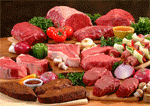
US club store operator Costco has booked a jump in earnings for the first nine months of the year as strong sales gains boosted the group's result.
Net sales for the nine months to May 8 rose 13% to $59.46 billion, including sales from the group's Mexican joint venture, which Costco began to consolidate into its financial results in fiscal 2011. Excluding this, comparable sales were up 9% in the period.
Costco also revealed that currency exchange and gas price inflation raised the group's sales totals. Excluding petrol and currency exchange, sales were up 6% during the period.
Net income was $984m, or $2.22 per share, compared to $871m, or $1.95 per share, last year.
For the quarter ended May 8, Costco reported a profit of $324 million up from $306 million a year earlier. Revenue jumped 16% to $20.62 billion. The chain took a pretax inventory charge of $49 million as inflation swelled in the quarter.
Same-store sales, excluding currency changes and gasoline, were up 7%. The sales increased 6% in the U.S. and 11% internationally. Total same-store sales, including Mexico stores, rose 12%.
The company continues to take advantage of manufacturer deals prior to price increases, Richard Galanti, executive vice president and chief financial officer, said. “Then we hold the price for a few weeks and benefit on the tail end to cover our costs.”
Speaking with analysts during a conference call to discuss financial results, Galanti said another round of price increase announcements are due next week, “and we will probably get hit first. But it is what it is, and we're fighting to delay passing the increases on and to sell as much at the old price as we can.”
 The Food and Drug Administration (FDA) is seeking comments about a range of proposed steps for food companies to evaluate food safety hazards at manufacturing plants. The rules have been created as part of the FDA Food safety Modernization Act. Under the law, preventive control plans must be created with information about evaluating hazards that could affect food safety and specifying preventive step to minimize or prevent the hazards.
The Food and Drug Administration (FDA) is seeking comments about a range of proposed steps for food companies to evaluate food safety hazards at manufacturing plants. The rules have been created as part of the FDA Food safety Modernization Act. Under the law, preventive control plans must be created with information about evaluating hazards that could affect food safety and specifying preventive step to minimize or prevent the hazards.

















































